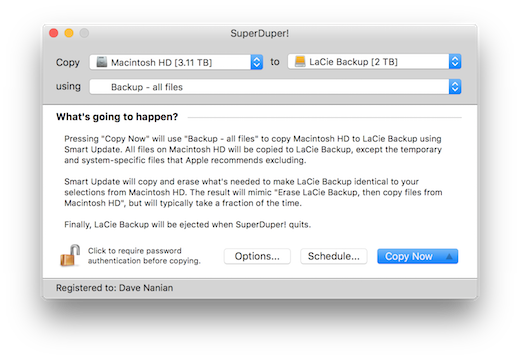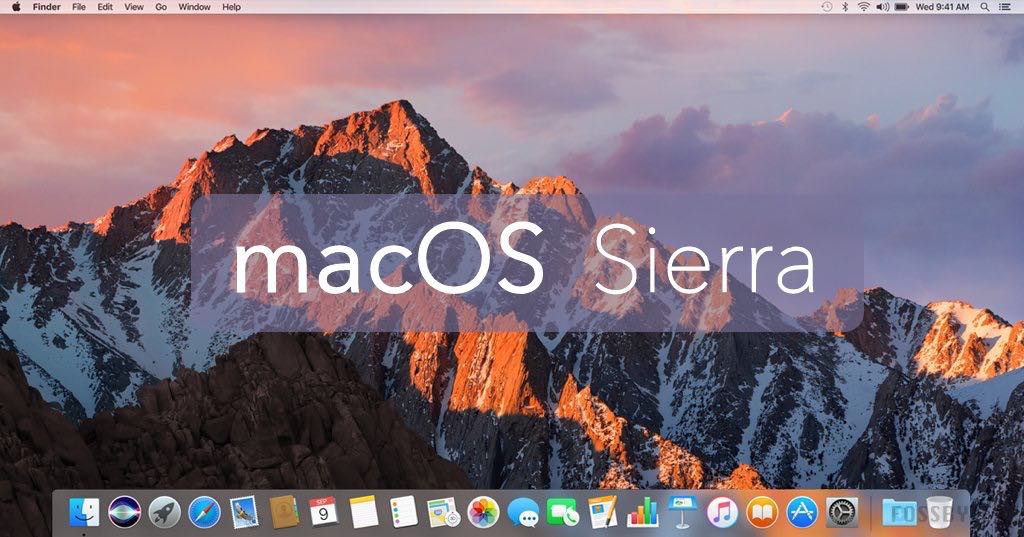Apple has announced the Mac OS Sierra as the next version of Mac system software. During its presentation that took place at the WWDC 2016 conference, the new macOS sierra was versioned as Mac OS X 10.12 and will be accessible as a free copy for all compatible Macs. The Mac OS 10.12 final comes with a lot of amazing features.
At this year’s WWDC 2017 conference, Apple announced macOS 10.13 High Sierra to the world. This latest version of the operating system that runs on Macs and MacBooks comes with a number of great new features.
The final release of macOS 10.13 High Sierra is now available to download as of September 25, 2017. Leading into this, some Apple fanatics opted to install macOS 10.13 High Sierra early via private and public beta channels.
So if you don’t want your Mac or Macbook crashing at random times while you’re working, we strongly recommend installing this stable release of macOS 10.13 High Sierra, which can be downloaded here from the Mac App Store.
Since the release some people have encountered some problems, so we'd recommend checking out our guide on macOS 10.13 High Sierra problems: how to fix them.
Apple has also released macOS High Sierra 10.13.1, which includes a number of bug fixes that should address some of the problems that people have been facing, as well as new features and improved security measures. We'd highly recommend you download and install macOS High Sierra 10.13.1 as soon as you can.
Back up your Mac before upgrading to macOS 10.13 High Sierra
Whenever you make the move to a fresh-off-the-shelf new operating system, we highly recommend backing up the files on your Mac, so if anything goes wrong you can quickly restore your machine to its previous working order.
So before you download and install macOS 10.13 High Sierra, make sure your Mac is backed up. For information on how to do this, head over to our .
- macOS runs on several of the best laptops available today

How to download macOS High Sierra 10.13.1
With the updated macOS High Sierra 10.13.1 now available to download, bringing bug fixes, extra stability and security features, we recommend downloading and installing that update as soon as possible.
To do this from within macOS High Sierra, click on the Apple menu and select 'App Store'. From the App Store, click on the 'Updates' tab, and you should see 'macOS 10.13.1 Update 10.13.1' listed. Make sure you've saved your files, and backed up any irreplaceable files, then click on 'Update'.

You can also download the macOS High Sierra 10.13.1 update from Apple's support site.
How to enroll in the Apple Beta Software Program
Of course, the macOS 10.13 High Sierra Public Beta is still available despite the final stable edition having already been released. If you really want to test-drive new builds before they’re seeded to everyone else, you can sign up .
Otherwise, you can start downloading the consumer release of macOS High Sierra from the App Store. The download itself should only take a couple of minutes on a broadband network connection. Though, for users with data caps to worry about, it’s notably 4.8GB in size.
Of course, like all version of macOS (and OS X before it), macOS High Sierra can be downloaded and installed completely free of charge. Even so, macOS 10.13 High Sierra is only compatible with Macs and MacBooks running at least OS X 10.8.
Once macOS 10.13 High Sierra has been downloaded in its entirety, a new window will open prompting you to agree to Apple’s terms and conditions. From there, all you have to do is select the disk you want to install the OS on (we recommend an SSD to take advantage of the new Apple File System) and the process of installing macOS 10.13 High Sierra will begin.
- Having issues? See our macOS 10.13 High Sierra problems: how to fix them guide
- These are our top 50 best Mac tips
- Fancy an upgrade? Check out the latest cheap MacBook deals
Gabe Carey has also contributed to this article
Direct download MacOS Sierra.dmg 10.12 dev preview from Torrent, Google drive, and drop box for free without having a developer account on apple.com.Apple already announced it four new OS for it four different devices iOS 10 for iPhone,macOS Sierra 10.2 for Macbook, watch OS and TVOS.You can download macOS Sierra 10.2 from multiple mirrors provided by multiple sources.
Apple has done a great job this time.Apple totally redesigns iOS 10 for iPhone and macOS Sierra 10.2 for Macbook. The biggest thing they added in it is Siri that is deeply integrated into the new MacOS sierra.You can download the latest macOS Sierra official on your Mac this Fall.
But if you want to try out macOS Sierra developer preview for free without having developer account then you can download directly from the below link and install it on your MacBook devices.
Which device is compatible with Sierra OS?
Here’s the list of Macs supported to run macOS Sierra:
- MacBook (late 2009 and later).
- iMac (late 2009 and later).
- MacBook Air (late 2010 and later).
- MacBook Pro (late 2010 and later).
- Mac Mini (late 2010 and later).
- Mac Pro (late 2010 and later).atch out new features shared by CultofMactv.
#Download Sierra 10.12

- File name :MacOS Sierra.dmg
- File Size: 5gb
- Updated on: 15 June
#Download from below Mirrors
#How to Install Sierra OS (Dual boot)?
To set up a dual-boot system you’ll need to do the following things.
- Open up Disk Utility (Applications > Utilities > Disk Utility) and select the main drive. Then select the Partition option.
- Now you’ll see a large rectangle with the heading Partition Layout. Currently, it will be a single drive, so click the Plus button beneath it and then click on the new partition you created.
- To resize the partition simply drag the partition corners.
- Now rename the new partition from any name you want then click Apply.
- Now find the downloaded version of macOS Sierra and click on it to begin the install.
- When you see the option of which disk you want to install it on be sure to select the new partition that you created earlier in step 4.
- When it’s done click on install and let the process starts automatically, after completing with your Mac will rebooting into Sierra.
From now on when you want to return to the previous version of macOS (or OS X) on your system, reboot your machine while holding down the Alt key. This will present you with a menu of which drive you want to boot from.Thanks to PCA for this guide.
Mac Os X El Capitan
via:Source1,source2
Mac Os X Sierra Manual Download 2017
THANKS BRO